
This course features a video review of addition up to the sum of ten for first graders.
- Subject:
- Foundations
- Math
- Material Type:
- Activity/Lab
- Lesson
- Provider:
- CK-12 Foundation
- Provider Set:
- CK-12 Elementary Math
- Date Added:
- 05/03/2018

This course features a video review of addition up to the sum of ten for first graders.

This activity is designed to determine the appropriate instructional level for a student in a one-on-one interaction with the teacher.
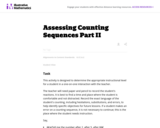
This activity is designed to determine the appropriate instructional level for a student in a one-on-one interaction with the teacher.

In this assessment in a one-to-one setting, a student is shown the numbers from 1Đ10, one number at a time, in random order. The teacher asks, Ňwhat number is this?"

This assessment task can be used with a single student or a small group of students. Each student needs his or her own set of numeral cards.
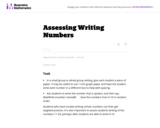
This assessment may be used in a small group or whole group setting, give each student a piece of paper. Students who have trouble writing certain numbers can then get targeted practice.

Ratio errors confuse a dodgeball coach as two teams face off in an epic tournament. See how mathematical techniques such as tables, graphs, measurements and equations help to find the missing part of a proportion.

True love has the right ratio. In this humorous animation, the number of words spoken by each partner predicts whether a date goes well or horribly. What do you do when someone asks if you listen to country music backwards, but won't let you get a word in edgewise?

This task suggests methods of introducing and continuing choral counting in the classroom.
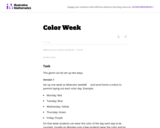
The purpose of this task is to help students understand the connection between counting and cardinality. Thus, oral counting and recording the number in digit form are the most important aspects of this activity. However, teachers can extend this by making a bar graph about how many students are wearing the color each day.
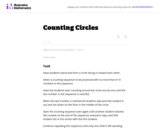
This task suggests ways to incorporate counting circles into classroom activities.
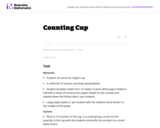
This activity allows students to practice counting.
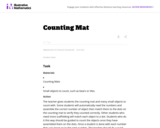
This task gives students another way to practice counting and gain fluency with connecting a written number with the act of counting. This task should be introduced by the teacher and would then be a good independent center.

The most engaging way to practice counting with students is to have them count meaningful things in their lives. Since five-year-olds are very focused on themselves this is easily done by allowing them to count themselves, their friends and objects within the classroom that relate to their daily lives.

The objective of this lesson is to gain automaticity counting to 100 and to establish the importance of multiples of ten. The final goal of this lesson is for students to be able to count by tens and articulate the term for this.

This task supports students in correctly writing numbers. Because students have to trace the number, instead of coloring in a bubble with the number in it or circling the correct number, they gain handwriting practice as well as counting and addition practice.
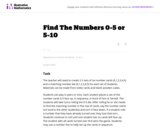
This card game allows students to practice number skills.

This game will reinforce number before and after as well as reading and sequencing numbers.

Math Game Time offers a variety of games, videos, and printable worksheets tailored for K-6 and middle schoolers to enhance their math skills. With focused videos on specific topics and kid-appropriate games, it's an ideal resource for practicing math skills.

Over 270 free printable math posters or maths charts suitable for interactive whiteboards, classroom displays, math walls, display boards, student handouts, homework help, concept introduction and consolidation and other math reference needs.